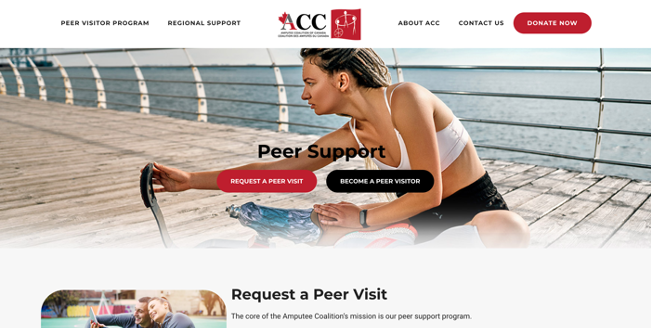Setting up the visit

Referrals may come to you from a number of sources. People can submit a request for a peer visit through the Amputee Coalition of Canada website. If your local hospital or rehabilitation centre has a peer visiting program, the referrals may come from there. Referrals may also come by word of mouth including through your physiotherapist or your prosthetist when they know of people who would benefit from the peer visit.
The information, which you may or may not receive but which would be helpful in planning your visit, includes age; date, level and cause of amputation; any other health conditions such as hearing impairment that might have an impact on the effectiveness of the visit; emotional state; the types of information that have been requested by the person with amputation or by their family; or any other background information that will help you in planning for the visit.
The most effective visits take place in person but when this is not possible visits that have been held over the phone, video conferencing or by email can also be effective.
Once you’ve been given the referral, you should contact the person to arrange a time for the visit that is convenient for them and, if they wish, for the family as well. If the person you’re going to visit is in a facility you may also need to arrange a time that works for the facility.
How do you prepare for the visit? If the person you were going to visit has requested information collect that information ahead of time or any other information that you feel might be helpful to them based on what you know about them. Find out, if possible, whether the person has any special needs including vision or hearing impairments so that you bring the appropriate materials.

